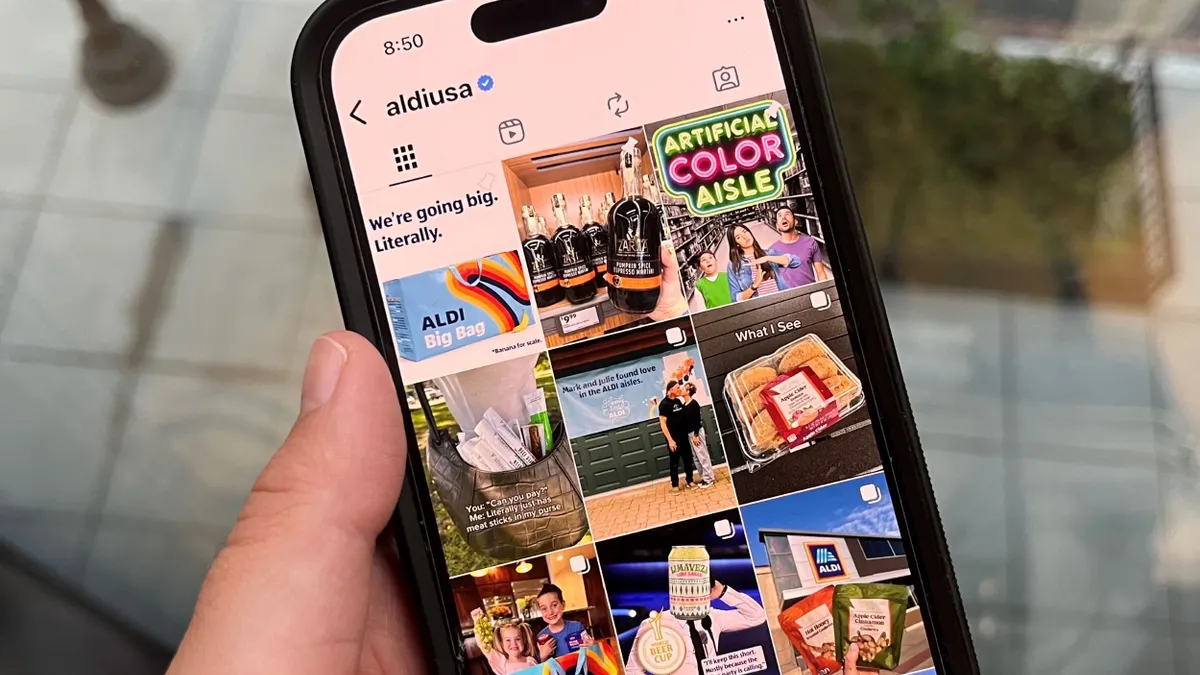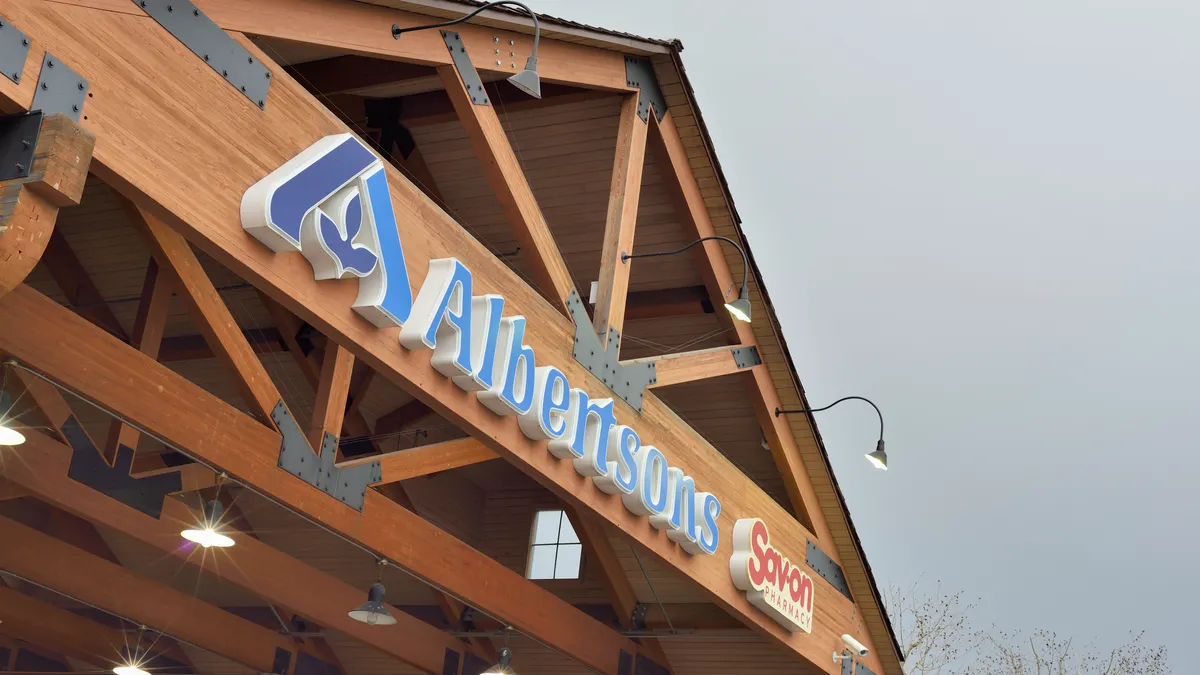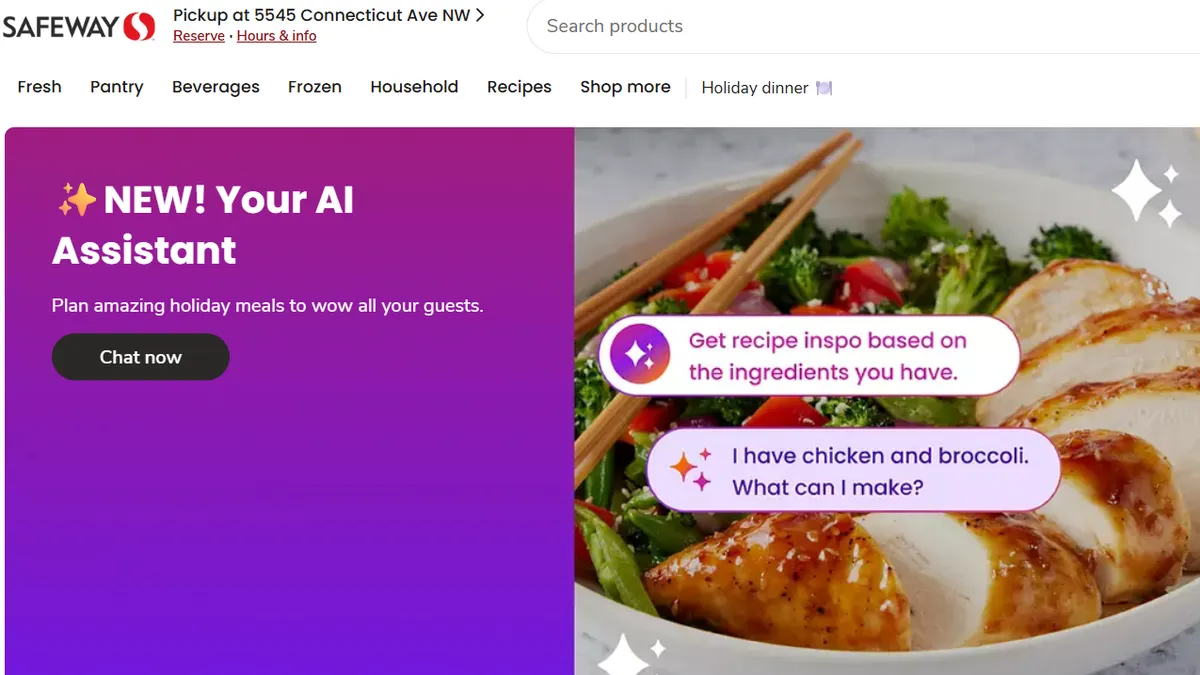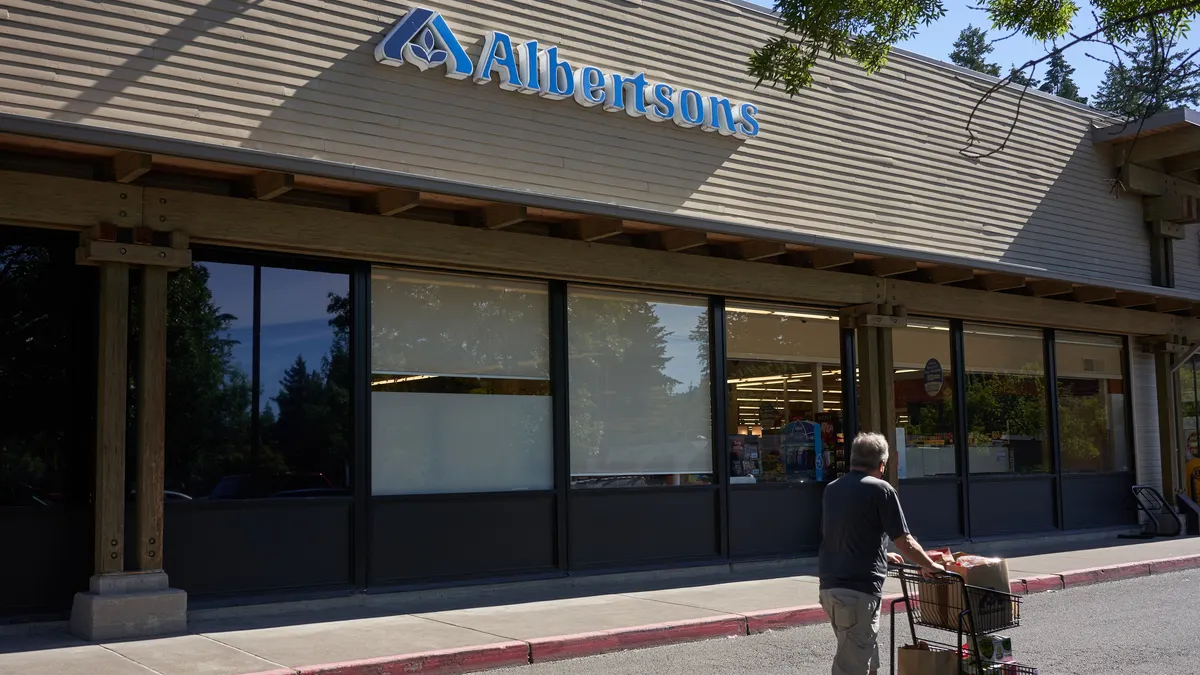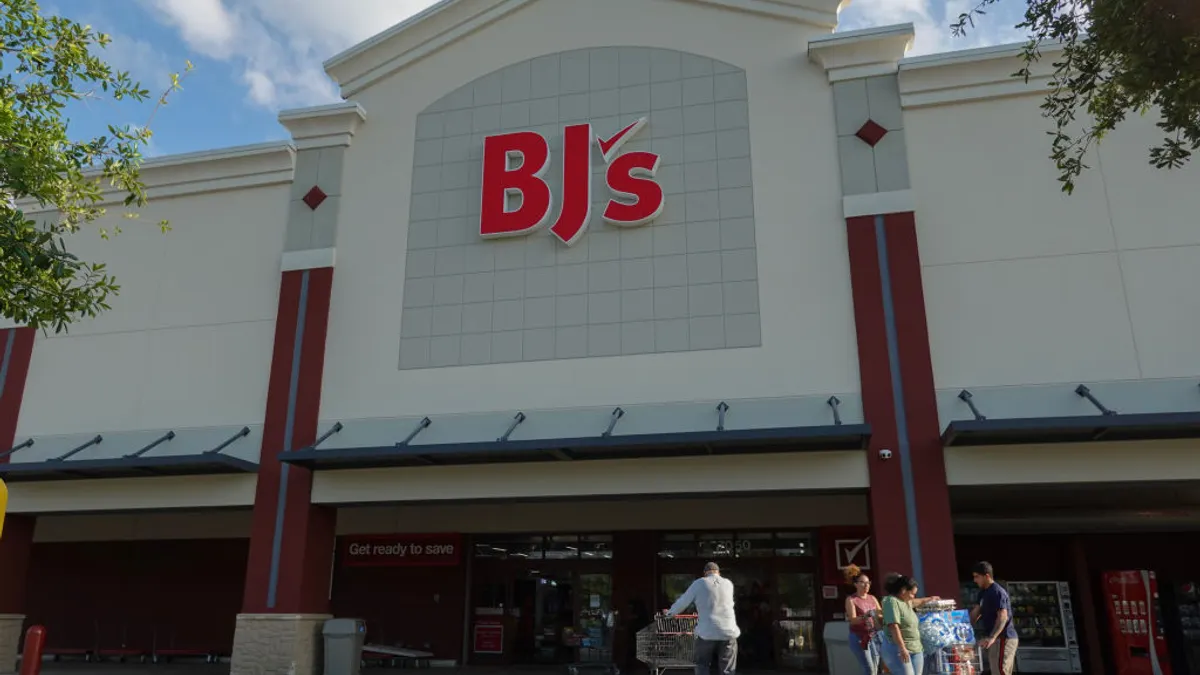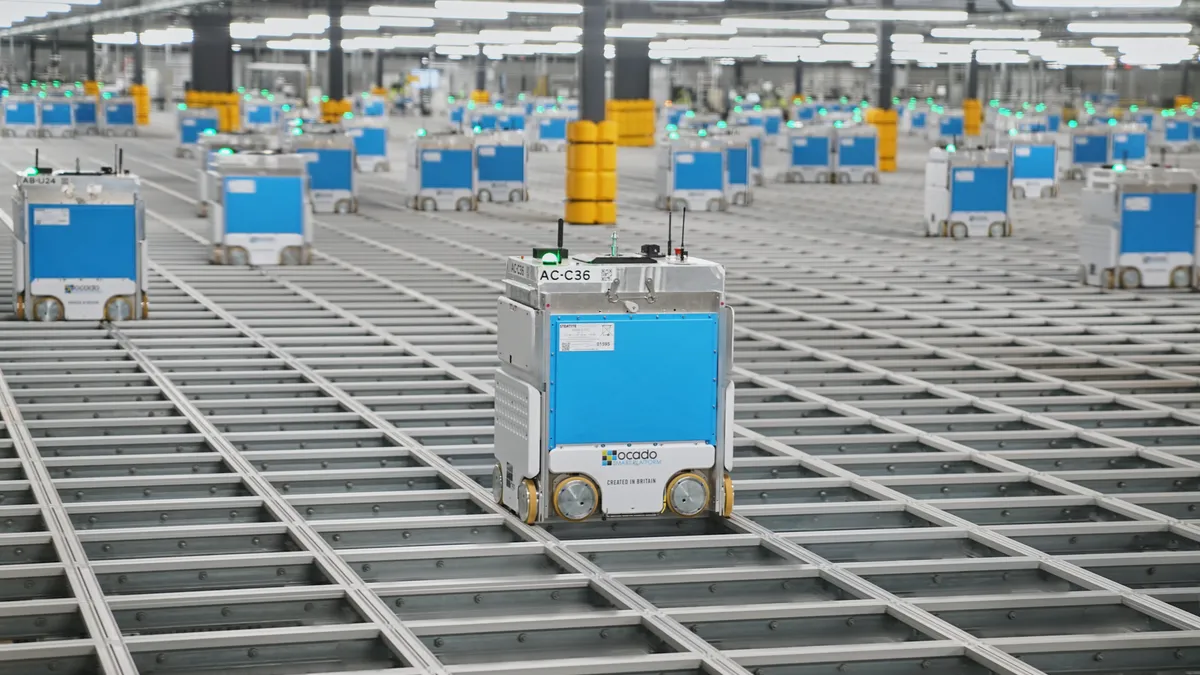Grocers typically use social media to show off what they bring to shoppers’ tables, from seasonal products to fresh meals.
At the end of the day, though, most grocers’ social media pages end up looking like ads on platforms that are primarily meant to entertain.
Aldi decided to try a new approach. Since the start of this year, the discounter has been testing a customer-centric strategy that takes the focus off the Aldi brand. While some of the company’s social posts still showcase the Aldi colors, logo and other marquee elements, many now simply riff off social media trends and culturally significant moments to attract viewer attention, Aldi U.S. Marketing Director Katherine Sodeika said in an interview.
Sodeika said the shift began when leadership asked her ahead of this year if she was doing what she wanted to be doing with the company’s social media content.
“The answer was ‘No. I’m doing what I think the company wants us to be doing and what I’ve been told is a priority, but it’s not really social first, and it’s not customer first,’” Sodeika said. “And that’s where we decided to make the pivot.”
This approach also included pulling back on spotlighting Aldi’s claim to fame: low prices. Only showing off low prices on Instagram and other social media platforms wasn’t paying off for Aldi, Sodeika said, adding that the company already has pricing information readily available for shoppers through other channels, such as its weekly ad.
Despite less obvious showboating on Aldi’s part, this new social media strategy is allowing the discounter to stand out from its competitors. While most grocers show off their private label assortments and in-store features, Aldi is garnering the attention of thousands by bringing a playful voice to its content and tapping into viral moments.
“Having that engagement, building that affinity with customers, it’s not just fun, it’s truly driving towards business objectives and driving sales,” Sodeika said.
A closer look at what’s working for Aldi
Aldi primarily posts content on five different social media platforms: Facebook, Instagram, TikTok, X (formerly Twitter) and LinkedIn, Sodeika said, with Facebook and Instagram serving as the company’s biggest focus. The company’s new strategy has led to double-digit growth in engagement so far this year on Instagram and TikTok.
Aldi is seeing higher engagement across top platforms.
Focusing less on Aldi as a store and more as a persona has allowed the company’s social media team to lean into trends and culturally relevant moments.
“I think where we really find success is when we are timely in cultural moments,” Sodeika said, noting back in January when Aldi quickly joined the discourse around the U.S. Food and Drug Administration banning the artificial coloring Red No. 3. Aldi took to social media to show off that it had banned synthetic colors a decade prior to the FDA’s request, but did so without flashing the Aldi brand.
The discounter’s Instagram post is simple, showing two side-by-side bowls of multi-colored cereals. Underneath the image is the statement, “One of these ditched synthetic colors back in 2015… And no one had to tell us to.” It’s not until viewers take note of the account behind the post that they see it’s Aldi USA. Aldi carries its playful voice into the caption, which provides details on its history regarding banning synthetic colors from all its exclusive products.
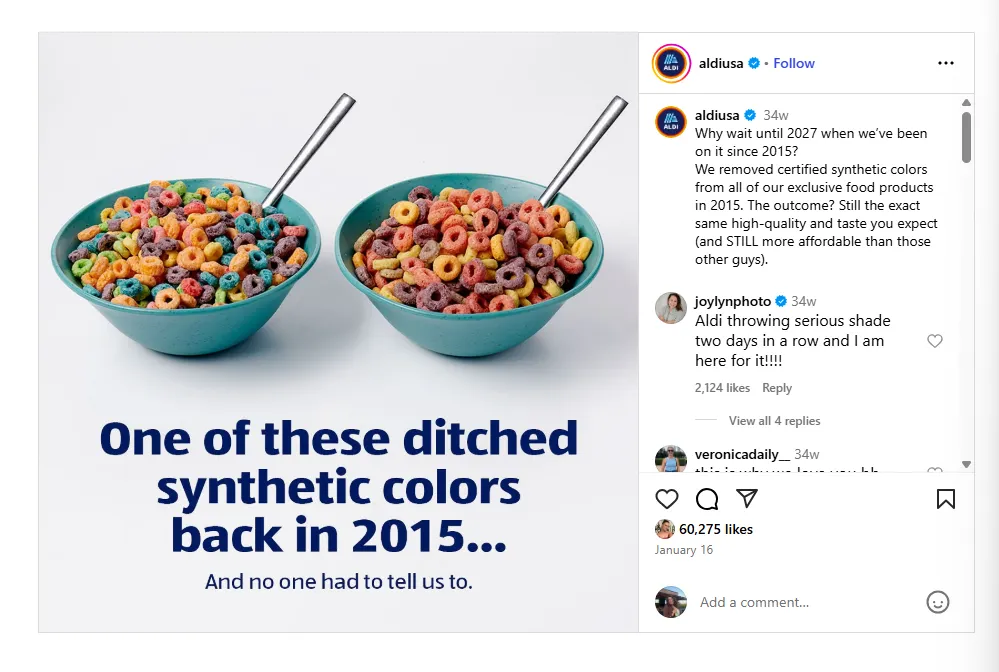
The post garnered more than 60,200 likes on Instagram, while a similar post on Facebook received over 10,000 likes.
But this isn’t even Aldi’s most popular post from this year. That post, which came just ahead of St. Patrick’s Day, took the same inconspicuous approach and mirrored a popular meme trend.
The post shows a burger patty with an unamused face and text below reading, “When he still hasn’t asked you to be his patty for St. Paddy’s Day.” The post accumulated more than 606,000 shares, nearly 522,000 likes and over 650 comments, including from Instacart, H&R Block, Red Robin and Aldi Ireland.
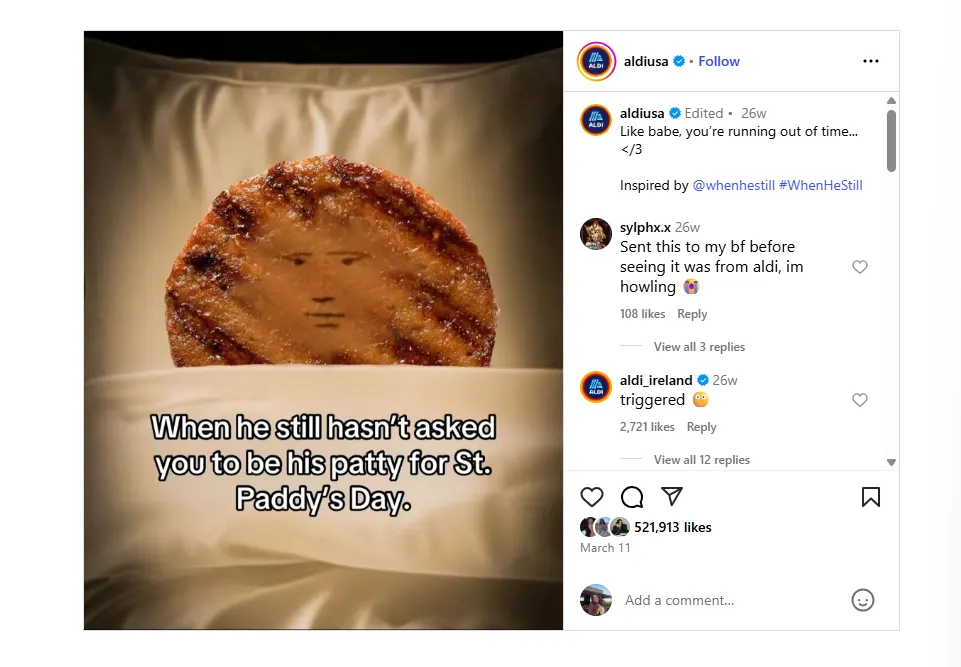
To provide some context on just how viral this post was, Grocery Dive compared grocers’ most-liked Instagram posts so far in 2025:
- Kroger: more than 25,100 likes
- Albertsons: more than 18,300 likes
- Whole Foods Market: more than 91,000 likes
- Lidl US: more than 31,700 likes
All of these Instagram posts were created in partnership with at least one influencer or celebrity.
In addition, based on a Grocery Dive analysis of all of Aldi U.S., Kroger, Albertsons, Whole Foods and Lidl US’s Instagram posts so far in 2025, Aldi’s average like-count on the social platform is in the thousands, while those competitors’ average like-count falls in the double- to triple-digits.
“We’re having a brand moment, and this brand moment’s not going anywhere. We are putting our foot on the gas. The more we learn, the harder we are leaning in,” Sodeika said.
Behind the Scenes
Aldi has not undergone any personnel changes to make this shift in its marketing strategy, according to Sodeika.
The social team consists of a manager and two associates, and this trio works with the rest of the marketing team or other company departments, Sodeika said.
“[The social team is] just cranking out awesome content, and they have the support of the wider department, feeding ideas and also always integrating it with what our wider market objectives … of acquiring new customers and growing the trips and the spend of our existing customers.”
The social team keeps Aldi’s content consistent across all U.S. divisions in order to remain efficient, Sodeika said, noting Aldi’s social accounts post multiple times a week on average. The team also juggles planning content weeks in advance while being ready to jump on relevant trends as they happen.
“What the social media strategy shift taught myself and taught the wider organization is, if you lean into how customers are engaging with channels and you develop the creative in a way that is complementary to that, you will be more successful,” Sodeika said.


